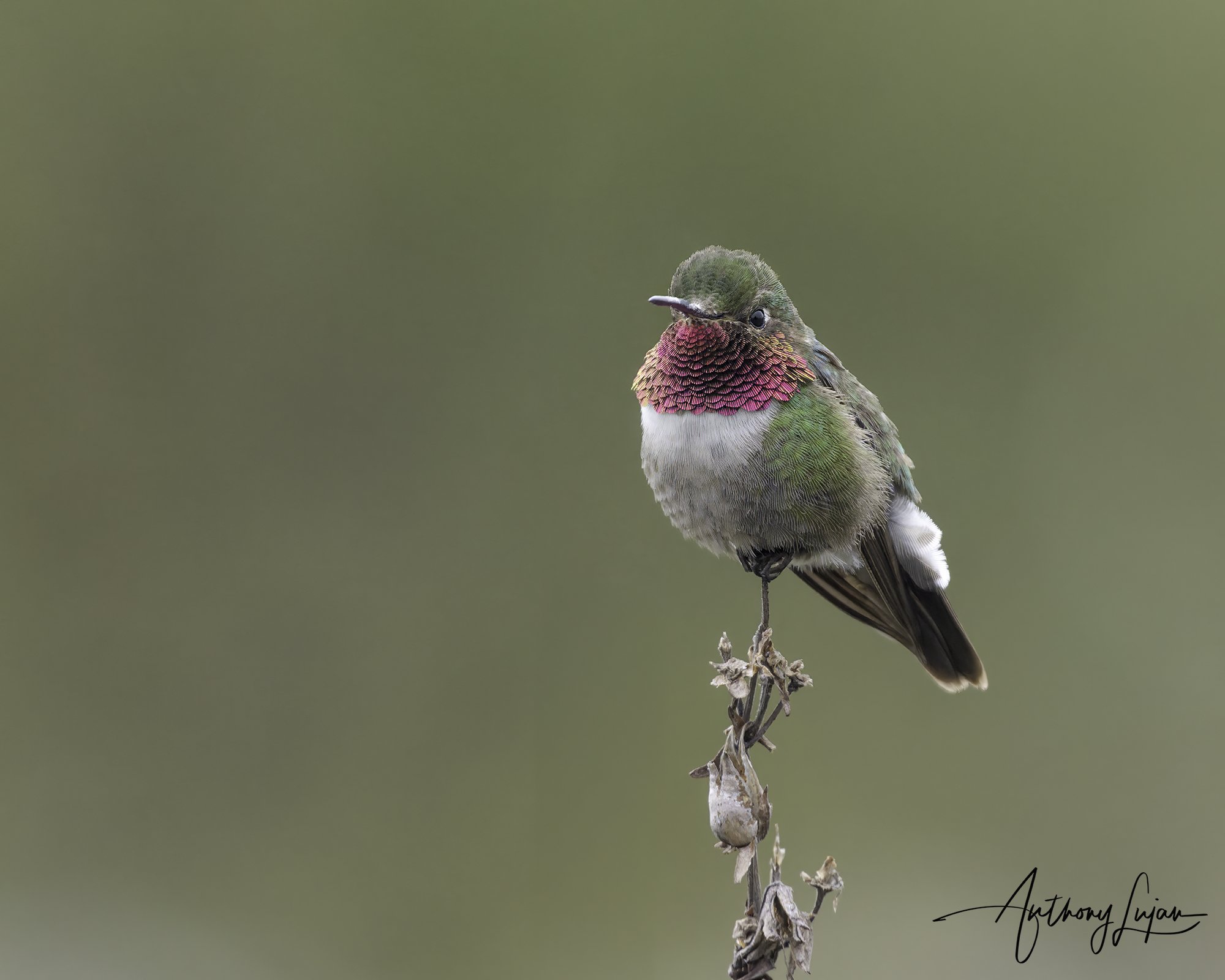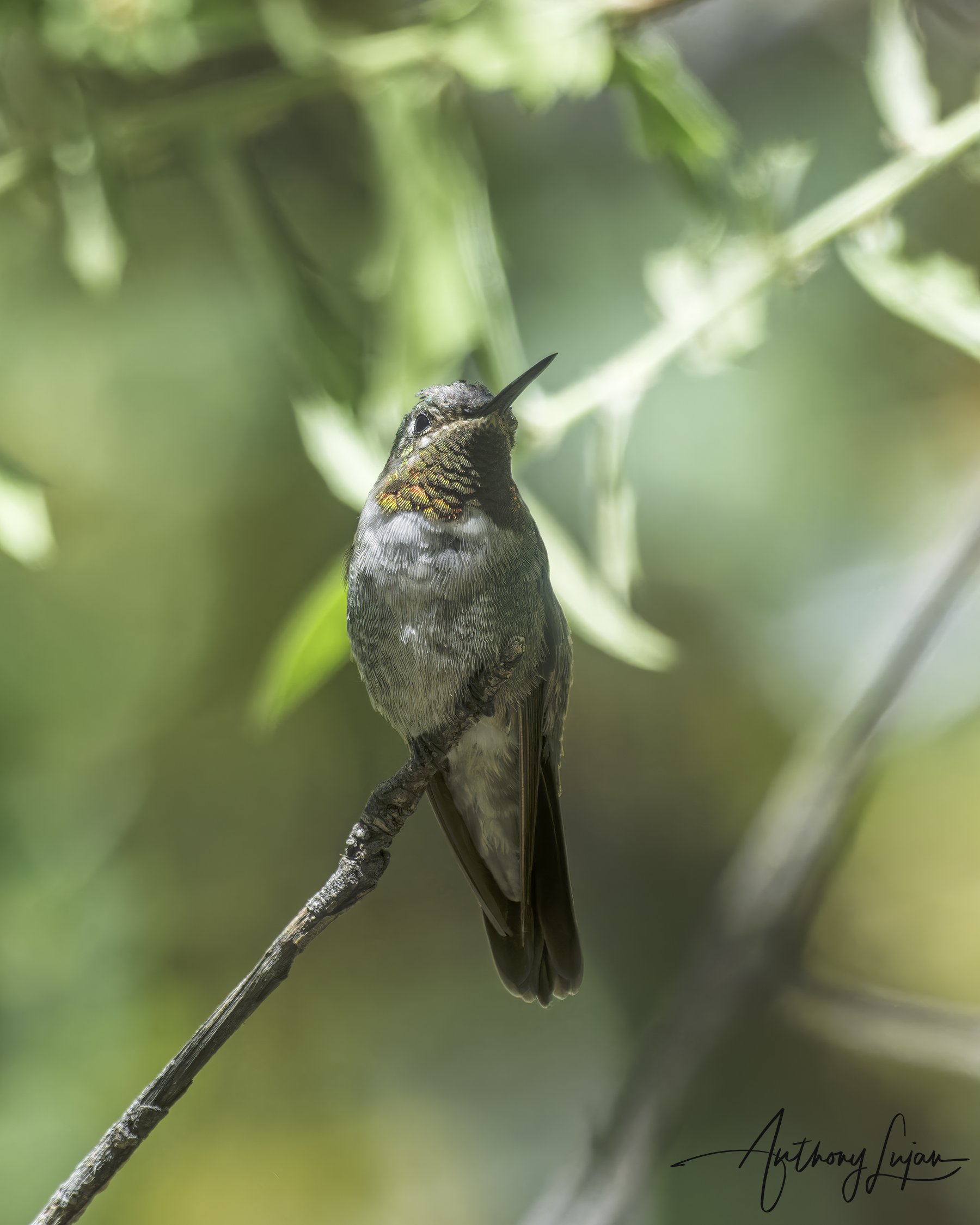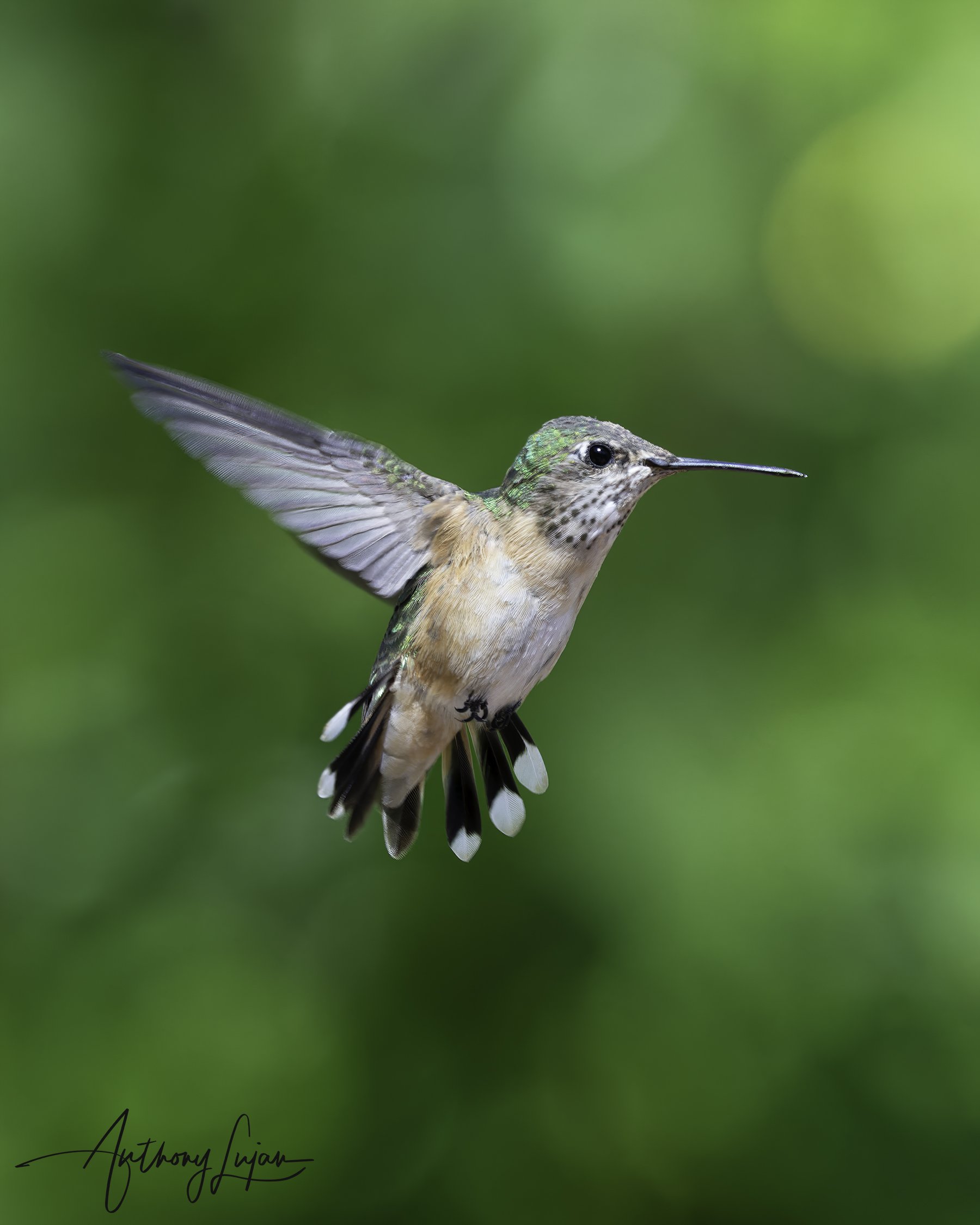Broad-tailed Hummingbird
Broad-tailed Hummingbird (Selasphorus platycercus)
Name Origin:
The genus name Selasphorus derives from the Greek selas meaning “light” or “flame” and phoros meaning “bearing,” a reference to the group’s fiery iridescence. The species name platycercus combines the Greek platy- (“broad”) and kerkos (“tail”), describing its broad, rounded tail feathers.
Quick Facts
🪶 Length: 9–10.5 cm (3.5–4.1 in)
⚖️ Weight: 3–4 g (0.10–0.14 oz)
🌎 Range: Western United States south through Mexico to Guatemala
🧭 Elevation: 1,500–3,800 m (4,900–12,500 ft)
🌸 Diet: Nectar and small insects
🏡 Habitat: Montane meadows, open pine-oak forest, and high-elevation scrub
🧬 Clade: Lampornithini "North American Flame Hummingbirds"
📊 Status: Least Concern (IUCN)
Subspecies & Distribution
Monotypic species — no recognized subspecies.
Distribution: Breeds across the mountainous western United States and southern Canada (Rocky Mountains, Great Basin, and Sierra Madre Occidental) south through Mexico to Guatemala. Northern populations migrate seasonally to southern Mexico and Central America, while some highland Mexican populations remain year-round residents.
Species Overview
The Broad-tailed Hummingbird is a striking highland species of western North America and Mesoamerica. Known for its rose-red throat and loud, metallic wing trill, it is a hallmark of alpine meadows and pine-oak forests. Its migratory endurance and cold tolerance allow it to thrive in habitats where few hummingbirds venture.
Male Description:
The male has shimmering emerald-green upperparts, a brilliant rose-red throat (gorget), and grayish-white underparts. The tail is rufous-bronze and broad, creating a loud trilling sound in flight caused by modified outer primaries. During courtship, males perform high, swooping display dives, flashing the gorget in sunlight.
Female Description:
The female lacks the bright throat, showing green upperparts, whitish underparts with buffy flanks, and a rufous-based tail tipped with dark bronze and white. She is quieter and less territorial but equally agile in flight.
Habitat & Behavior:
This species favors montane woodlands, forest openings, and alpine meadows rich in flowering plants such as Penstemon, Castilleja, and Ipomopsis. It feeds on nectar and small insects, often defending patches of flowers or feeders. During cold nights, it enters torpor to conserve energy, lowering its metabolic rate dramatically — an adaptation for cold mountain climates.
Conservation Note:
The Broad-tailed Hummingbird is listed as Least Concern by the IUCN and remains widespread and abundant. However, climate change and loss of alpine meadow habitat could alter migration timing and flower availability. Conservation of montane ecosystems and native flowering corridors ensures the persistence of this resilient Selasphorus species across its migratory range.
taken in Guatemala




View all the videos by clicking the three lines in the top right corner for the playlist.
taken in the United States




